Get ready to embark on a culinary journey with our mouthwatering Pork Roast Recipe, where every bite promises a symphony of flavors that dance on your palate. Whether you’re a beginner eager to impress or a seasoned chef seeking a reliable classic, this recipe wraps you in the comforting embrace of aromatic herbs and a crispy, golden crust that shields tender, juicy meat within.
Imagine the savory aroma of garlic and rosemary wafting through your kitchen, teasing your senses and building anticipation. This pork roast stands out with its delightful blend of spices and a hint of sweetness, creating a dish that is both heartwarming and memorable. Rest assured, with our straightforward steps, you’ll master this centerpiece with ease and enjoy a sensational meal that feels like a celebration.
About This pork roast Recipe
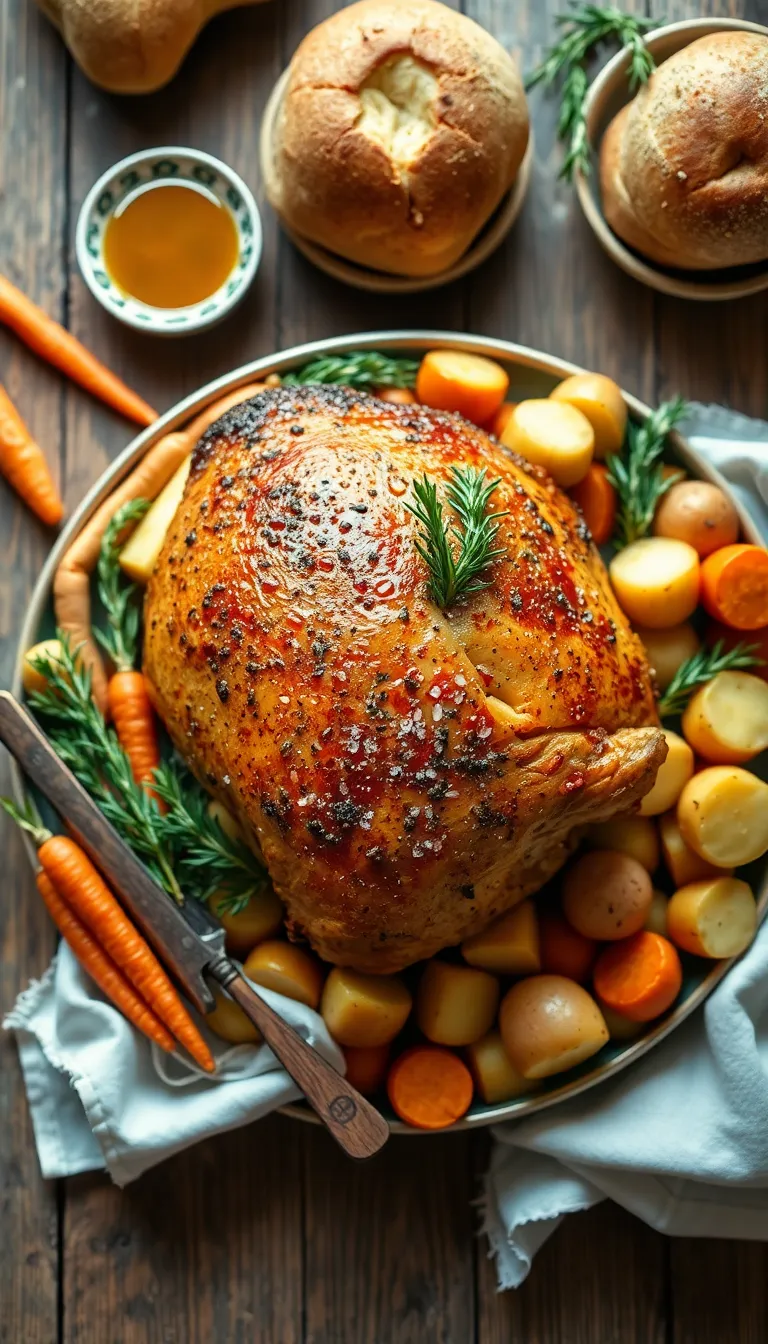
- Irresistible Flavor: This pork roast recipe is infused with a perfect blend of herbs and spices, creating a savory crust that locks in juicy, tender meat.
- Time-Saving Preparation: With minimal prep time and simple steps, this recipe allows you to spend more time with your family while the oven does the work.
- Versatile Dish: Perfect for a cozy family dinner or an impressive holiday feast, this pork roast is a crowd-pleaser for any occasion.
- Healthy and Nutritious: Rich in protein and essential nutrients, this dish supports a balanced diet without sacrificing taste.
- Customizable Ingredients: Easily adapt the seasoning to suit your taste preferences or dietary needs, making it a flexible option for any home cook.
Why You’ll Love This Recipe
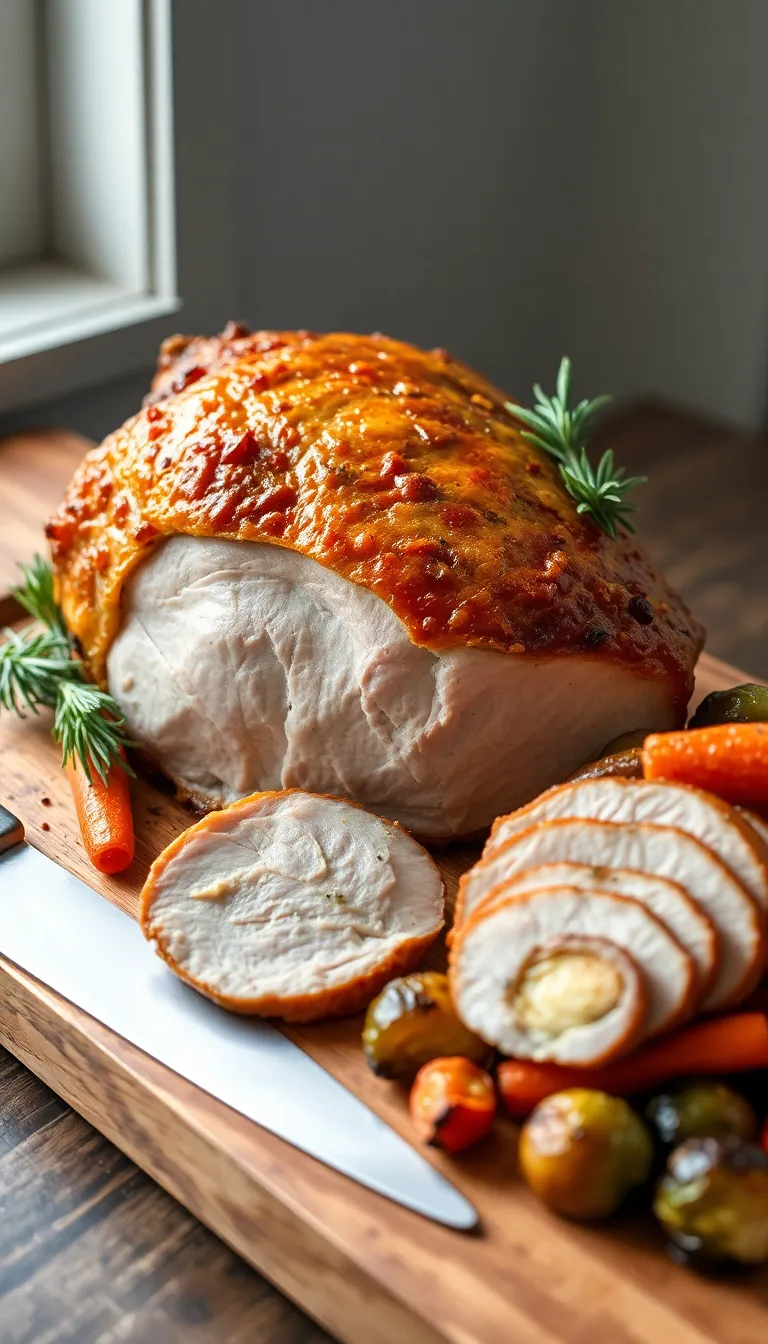
- Rich, savory flavors: This pork roast is marinated with a blend of herbs and spices that infuse it with a deep, mouth-watering taste.
- Simple preparation: With just a few easy steps, this recipe is perfect for both beginners and seasoned cooks looking for a hassle-free meal.
- Perfectly tender meat: Slow roasting ensures that the pork is incredibly juicy and tender, making every bite a delight.
- Time-saving: Once it’s in the oven, you can enjoy your day while the roast cooks to perfection without constant supervision.
- Impressive presentation: The golden crust and aromatic herbs make this dish a stunning centerpiece for any dinner table.
- Versatile serving options: Pair it with your favorite sides, from creamy mashed potatoes to a fresh garden salad, for a complete meal.
Ingredients
- 3-4 lbs pork shoulder (also known as pork butt; provides a tender and juicy result)
- 2 tbsp olive oil (or any neutral oil)
- 1 tbsp salt (kosher salt recommended for even seasoning)
- 1 tsp black pepper (freshly ground for the best flavor)
- 1 tbsp garlic powder
- 1 tbsp onion powder
- 2 tsp dried thyme
- 2 tsp dried rosemary
- 1 cup chicken broth (or vegetable broth for a slightly different flavor)
- 1/4 cup apple cider vinegar (adds a subtle tanginess)
- 2 tbsp soy sauce (adds depth and umami)
- 3-4 cloves garlic, minced
- 1 large onion, sliced
- 3-4 carrots, peeled and cut into chunks
- 2-3 potatoes, cut into chunks (Yukon Gold or Russet recommended)
- 1 tsp paprika (for added color and flavor)
- 1 tbsp honey (optional, for a touch of sweetness)
- 1 tbsp fresh parsley, chopped (optional, for garnish)
Kitchen Tools You’ll Need
- Roasting Pan: Essential for cooking the pork roast evenly. If you don’t have a roasting pan, a large baking dish or a cast-iron skillet can be used as alternatives.
- Meat Thermometer: Important for checking the internal temperature of the pork to ensure it is cooked to the desired doneness. An instant-read thermometer can also work.
- Sharp Knife: Used for trimming excess fat from the pork and slicing the roast after it is cooked. A chef’s knife or carving knife is ideal.
- Cutting Board: Provides a stable surface for trimming and slicing the pork without damaging your countertops.
- Tongs: Handy for turning the pork roast during cooking and transferring it to a cutting board. If you don’t have tongs, a large fork can be a substitute.
- Aluminum Foil: Useful for tenting the roast after cooking to let it rest and retain its juices. Parchment paper can be used for tenting if foil is unavailable.
- Basting Brush: Needed for applying marinades or glazes to the pork. A spoon can be used if a brush is not available.
- Mixing Bowl: Used for combining any seasonings or marinades before applying them to the pork.
Preparation Steps
- Preheat your oven to 350°F (175°C) to ensure it’s ready for the roast.
- Season the pork roast generously with salt, pepper, and any preferred herbs or spices, ensuring an even coating for balanced flavor.
- Heat a tablespoon of oil in a large skillet over medium-high heat. Sear the pork roast on all sides until golden brown, about 3-4 minutes per side, to lock in juices.
- Transfer the seared pork roast to a roasting pan, fat side up, and place in the preheated oven.
- Roast for approximately 20 minutes per pound, or until an internal thermometer reads 145°F (63°C). Tip: The juices should run clear when pierced with a knife.
- Remove the roast from the oven and let it rest for at least 10 minutes before carving to allow the juices to redistribute throughout the meat.
Serving Suggestions

- Mashed Potatoes and Gravy: Serve the pork roast with creamy mashed potatoes and a rich gravy made from the roast drippings. This classic pairing enhances the savory flavors and provides a comforting, hearty meal.
- Roasted Vegetables: Pair with a medley of roasted carrots, Brussels sprouts, and sweet potatoes. The natural sweetness of the vegetables complements the savory pork roast beautifully, adding color and nutrition to the plate.
- Apple Sauce or Chutney: A side of apple sauce or a tangy apple chutney offers a sweet and tart contrast that highlights the roast’s savory notes. It’s a traditional pairing that adds a refreshing twist to the meal.
- Crusty Bread and Butter: Include slices of warm, crusty bread with butter to soak up the delicious juices from the roast. This simple addition provides texture and completes the meal.
- Herb Garnish: Sprinkle freshly chopped parsley, thyme, or rosemary over the roast before serving. This adds a pop of color and a burst of fresh aroma that enhances the presentation and flavor.
- Pair with a Bold Red Wine: A glass of bold red wine, such as a Cabernet Sauvignon or a Merlot, complements the rich flavors of the pork roast. The wine’s robust character balances well with the dish, making it ideal for a special dinner occasion.
Pro Tips for Perfect Results
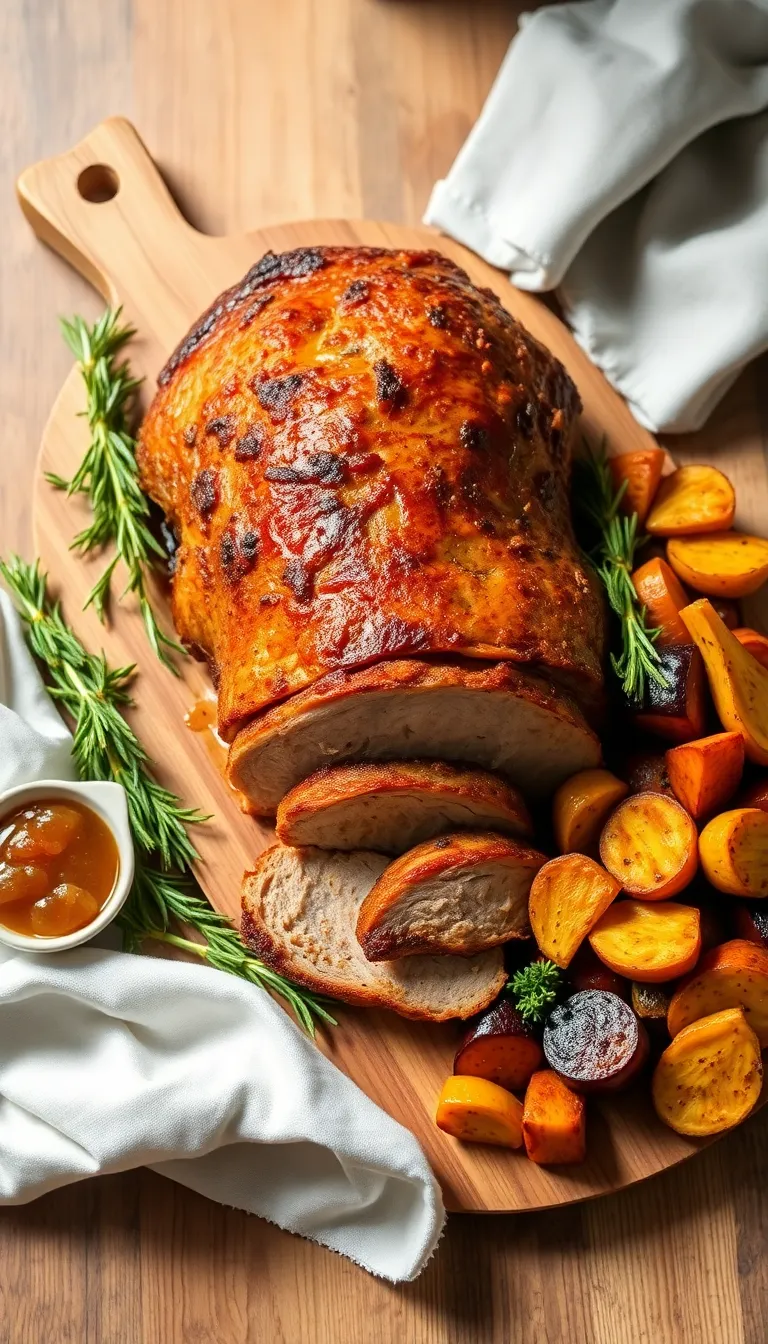
- Dry Brine for Juicier Meat: Season the pork roast with salt and let it rest uncovered in the refrigerator for at least 12 hours before cooking. This dry brining method helps the meat retain moisture and enhances flavor.
- Use a Meat Thermometer: Insert a meat thermometer into the thickest part of the roast without touching the bone. Cook until it reaches an internal temperature of 145°F (63°C) for perfectly cooked, juicy pork every time.
- Rest Before Slicing: Allow the roast to rest for at least 15-20 minutes after removing it from the oven. This resting period ensures the juices redistribute throughout the meat, resulting in a tender and flavorful slice.
- Create a Flavorful Crust: Use a mixture of herbs, garlic, and mustard to coat the exterior of the pork before roasting. This creates a delicious crust that adds depth and complexity to each bite.
- Make-Ahead Gravy: Prepare a rich gravy using the pan drippings from the roast. You can make this a day in advance and reheat it gently when ready to serve, saving you time and stress on the day of the meal.
- Chef’s Secret – Aromatic Steam: Place a small pan of water with a few sprigs of rosemary and thyme in the oven alongside your roast. The steam infused with herbs will subtly enhance the pork’s aroma and flavor.
Common Mistakes to Avoid
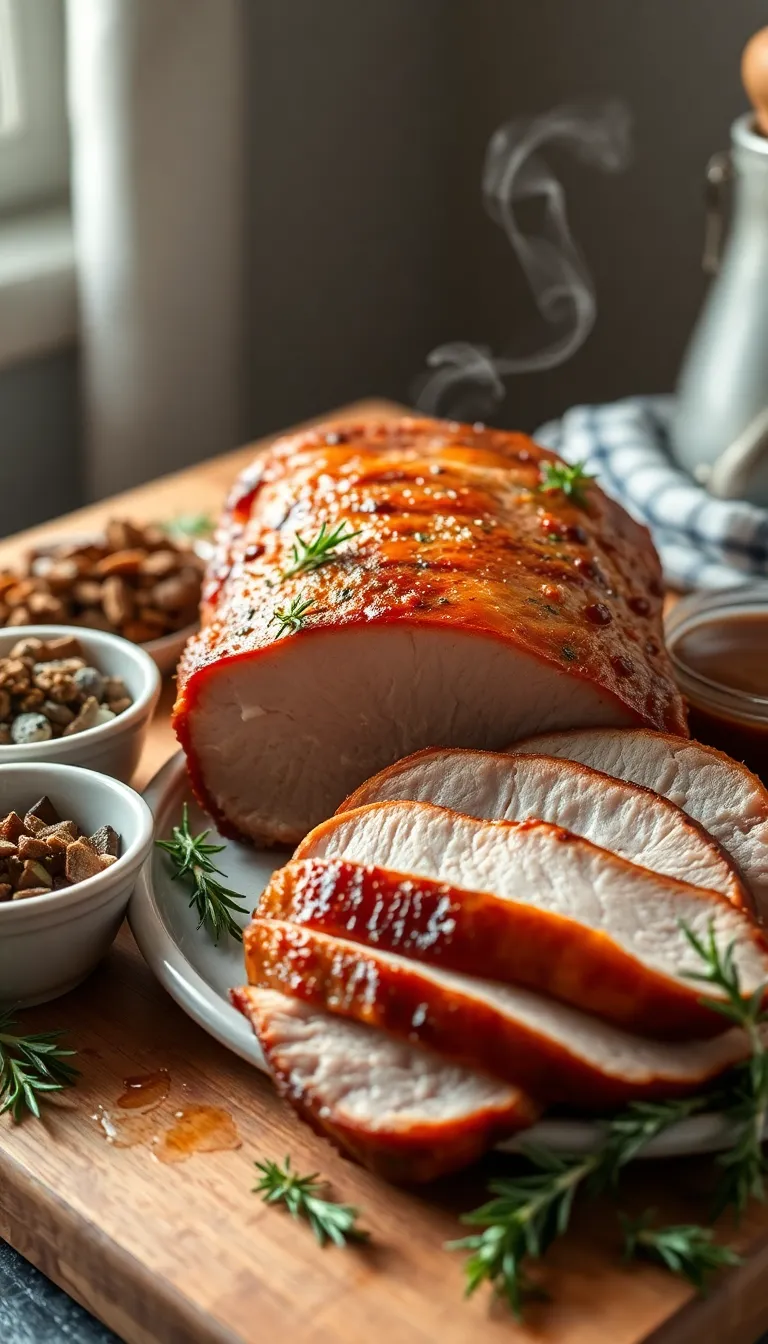
- Skipping the Searing Step: Many cooks skip searing the pork roast, which can lead to a lack of flavorful crust. Searing the meat before roasting helps to lock in juices and develop a rich color and flavor. To avoid this mistake, heat a little oil in a pan and sear the roast on all sides until a golden crust forms before transferring it to the oven.
- Not Using a Meat Thermometer: Guessing the doneness of the pork can result in undercooked or overcooked meat. Using a meat thermometer ensures that the pork reaches the safe internal temperature of 145°F (63°C). Insert the thermometer into the thickest part of the roast without touching bone for an accurate reading.
- Overcrowding the Roasting Pan: Overcrowding can cause the pork to steam rather than roast, leading to a less desirable texture. To prevent this, choose a roasting pan that allows for adequate air circulation around the meat. If necessary, divide the roast into smaller pieces or use a larger pan.
- Neglecting to Rest the Meat: Cutting into the pork immediately after roasting can cause the juices to escape, resulting in dry meat. Allow the roast to rest for at least 10-15 minutes under loosely tented foil. This step helps the juices redistribute, ensuring tender and juicy slices.
- Using the Wrong Cut of Pork: Selecting the wrong cut can affect the texture and flavor of the roast. For best results, choose cuts like pork loin or pork shoulder that are well-suited for roasting. These cuts provide the right balance of fat and meat for a succulent roast.
Storage and Reheating Tips
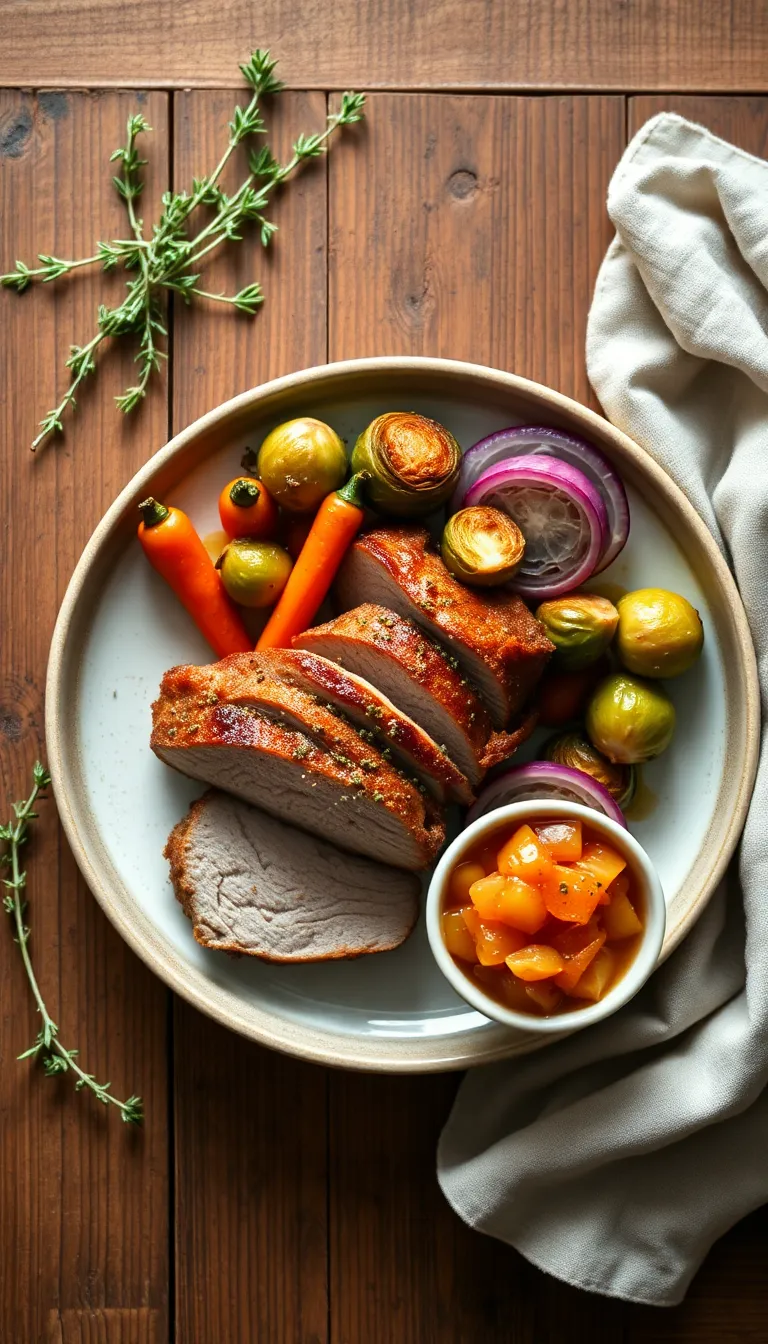
- Store leftover pork roast in an airtight container or wrap it tightly with aluminum foil or plastic wrap to prevent moisture loss.
- Refrigerate the pork roast within two hours of cooking to ensure food safety. It can be stored in the refrigerator for up to 3 to 4 days.
- If you plan to keep the pork roast for a longer period, freezing is an excellent option. Wrap the roast tightly in plastic wrap, then place it in a freezer-safe bag or container. It can be frozen for up to 3 months.
- To reheat, first thaw the pork roast in the refrigerator overnight if frozen.
- For best results, reheat the pork roast in the oven. Preheat the oven to 325°F (165°C), place the pork in an oven-safe dish, and cover with foil to retain moisture. Heat until the internal temperature reaches at least 165°F (74°C).
- If using a microwave, slice the pork roast into smaller pieces to ensure even heating. Cover with a microwave-safe lid or damp paper towel to prevent drying out, and heat on medium power.
- Avoid reheating the pork roast multiple times to maintain its flavor and texture while minimizing the risk of bacterial growth.
Frequently Asked Questions
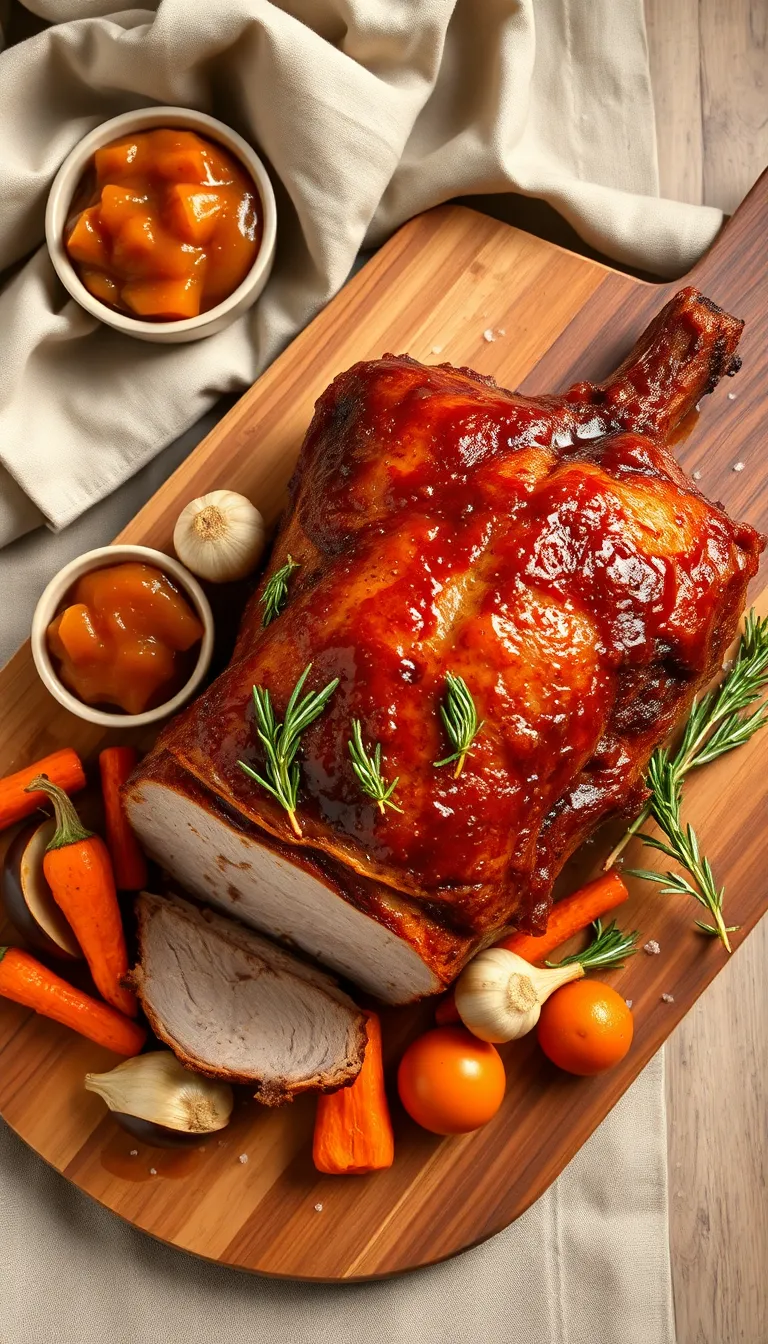
Q: Can I use a different cut of pork for this roast?
- Yes, you can. Pork shoulder or pork loin are great alternatives, but cooking times may vary slightly depending on the cut.
Q: What is the best way to ensure my pork roast stays juicy?
- Let the roast rest. Allowing it to rest for at least 15 minutes after cooking helps the juices redistribute, keeping the meat moist.
Q: How can I add more flavor to my pork roast?
- Try marinating. Use a marinade or dry rub with herbs, spices, and garlic to enhance the flavor before roasting.
Q: What should I do if my pork roast is overcooked?
- Slice it thinly. Serve it with a sauce or gravy to add moisture back into the meat.
Q: Can I cook vegetables with the pork roast?
- Absolutely. Add root vegetables like potatoes and carrots to the roasting pan for a complete meal.
Q: Is it necessary to sear the pork roast before cooking it in the oven?
- Not necessary, but recommended. Searing can create a flavorful crust and enhance the overall taste of the roast.
Final Thoughts
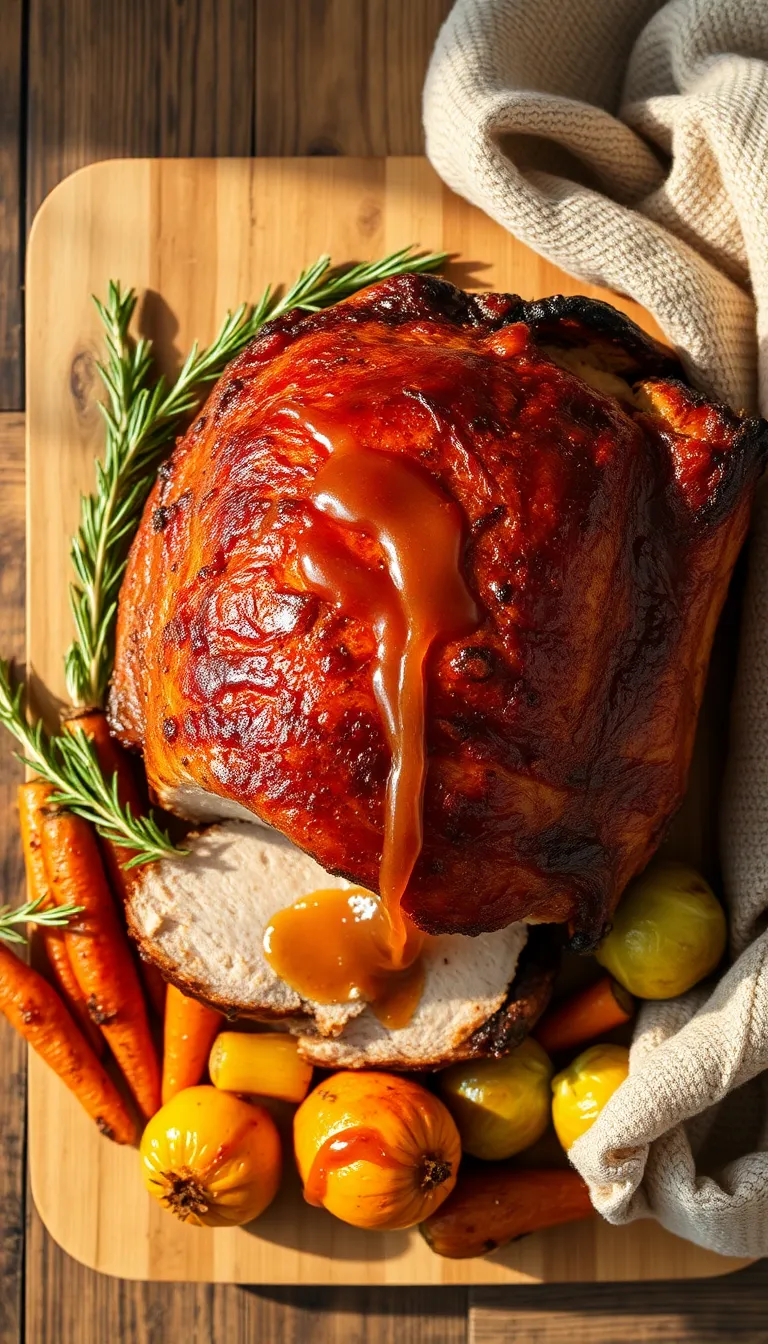
This pork roast recipe is a delightful blend of flavors that transforms a simple cut of meat into a culinary masterpiece. With its rich seasoning and perfectly roasted texture, it’s a dish that promises to impress both family and guests alike, making it a special addition to any meal.
Feel free to add your personal touch by experimenting with different herbs and spices to make it uniquely yours. Cooking is an art, and this recipe is a canvas that allows you to express your creativity while enjoying the process.
We warmly invite you to try this pork roast recipe and experience the joy it brings to your table. Your kitchen awaits, and we’re confident you’ll love every savory bite. Happy cooking!
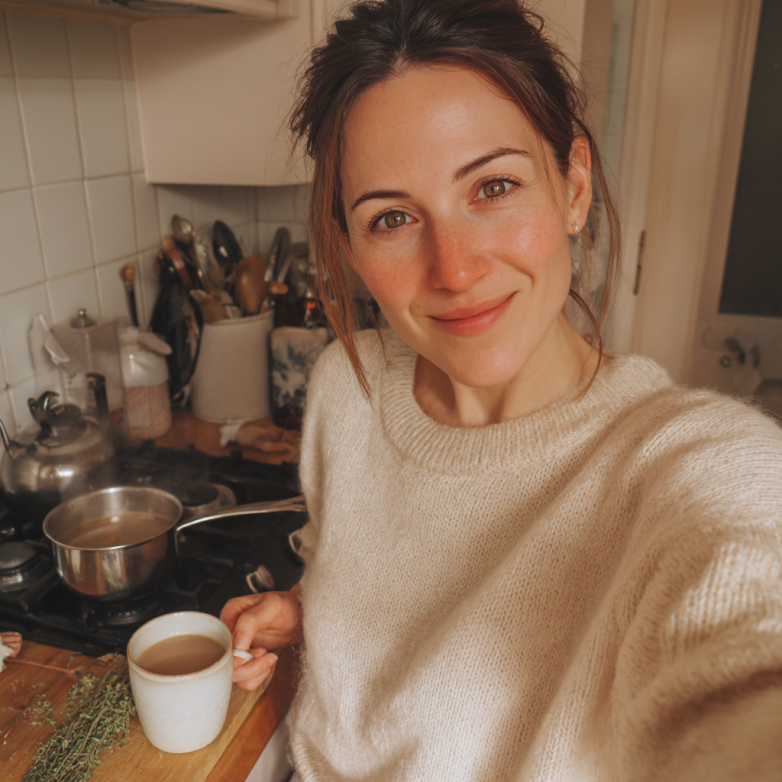
Hi, I’m Katie Dawson, a paediatric speech-language pathologist by day and a passionate food storyteller by night. Based in Seattle but with a love for global flavours (and a soft spot for Indian chai), I created this blog to bridge the gap between therapeutic nutrition and the simple joy of eating.

